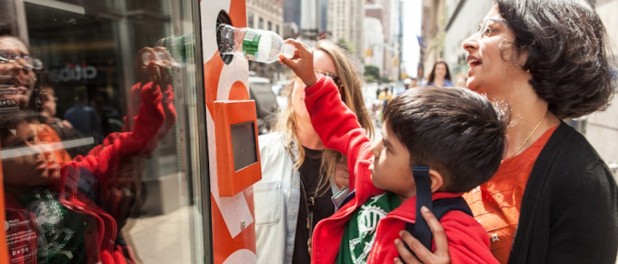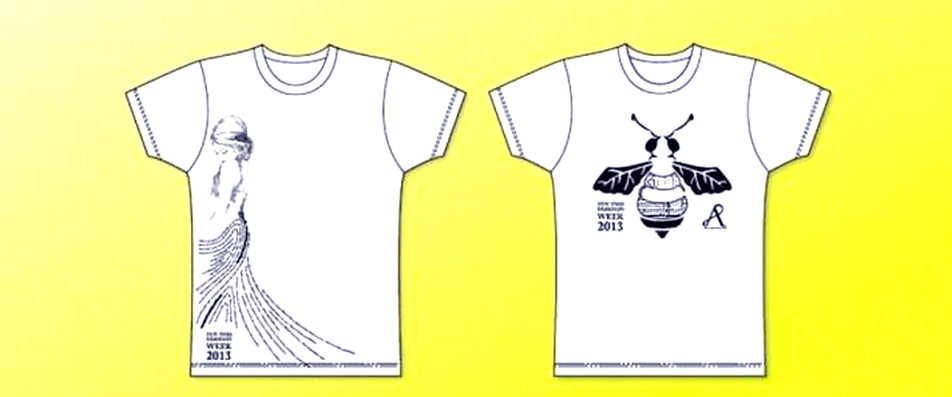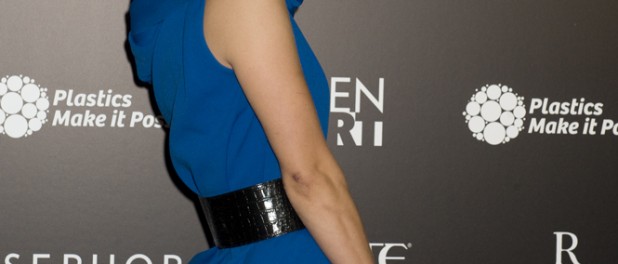Plastic bottle as currency.
Our everyday plastics can become beautiful, stylish clothing and accessories. Looking to be both fashion-conscious and eco-conscious? Plastics Make it Possible initiative helped New Yorkers explore this cool new trend.
For three days during New York Fashion Week, the passers on midtown 8th Avenue were able to “buy” a limited edition designer T-shirt made with recycled plastic fabric from a new vending machine by Plastics Make it Possible —using a plastic bottle as currency. Anyone passing by could simply deposit a plastic bottle into the machine and a beautiful new garment made with recycled plastics was dispensed, underscoring how everyday plastics can live on as “eco-chic” fashion.
Passersby could simply deposit a plastic bottle into the machine and—voila! Out pops a beautiful new garment made with recycled plastics, underscoring how everyday plastics can live on as “eco-chic” fashion. The new vending machine is designed to celebrate the growing role of recycled plastics in fashion during New York Fashion Week.
To help create the T-shirt material, plastic bottles were cleaned, melted, and stretched into a fine thread, which then is woven into soft, comfortable fabrics. Thanks to the versatility of recycled plastics, these fabrics can be manufactured with a variety of weights and textures for a wide range of uses. Both high-end designers and mainstream brands today use recycled plastics to make everything from stylish party dresses to trendy shoes to rugged outdoor jackets.
“By demonstrating that high-quality, stylish clothing can be made with recycled plastics, we hope that Allison Parris‘ design and this unique vending machine will inspire people to recycle more plastics,” said Steve Russell, vice president of plastics for the American Chemistry Council, which sponsors the Plastics Make it Possible initiative. “The simple act of recycling a plastic bottle or container or wrap not only helps reduce waste but also helps create the raw materials for making new, useful products, such as clothing.”




